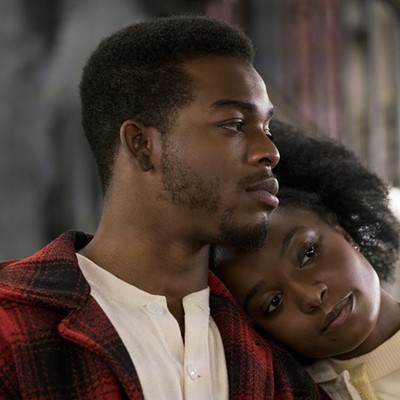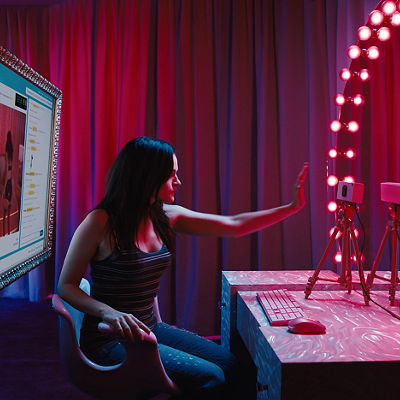It happened in Kansas City almost 25 years ago, when Warner Bros. previewed Sam Peckinpah's The Wild Bunch. As the opening scene unfolded, the audience knew they weren't watching any ordinary Western. A group of grizzled bandits (William Holden, Ernest Borgnine, Warren Oates and Ben Johnson) try to rob a bank in a Texas border town, get ambushed by lawmen and have to shoot their way out. The scene mixed slow and fast motion, long shots and close-ups in a delirious dance of death, with bodies pinwheeling through space, crashing through windows, jerking spasmodically as rounds riddled them, gushing small fountains of blood and guts.
From that moment forward, the film wallowed in a kinetic, hyperreal, terrifying portrayal of violence such as had never been seen before. Biographer David Weddle describes the screening vividly in his 1994 book about Peckinpah, If They Move ... Kill 'em!. "Thirty people bolted up the aisle and out of the theater, some to vomit in the adjoining alley. But most remained pinned to their seats, horrified yet transfixed .... 'I want to get the hell out of this place!' someone cried a few rows away. Another woman screamed, sprang from her seat and ran out of the theater."
But most people stayed. "Peckinpah viewed the anger of those who sat through the entire movie with irony," Weddle wrote. "He suspected the real target of their rage was not him, but themselves. 'They want to walk out, but they can't,' he would say later. 'They can't turn their faces away, and that makes them mad.'"
That single introspective comment summarizes just what makes the films of Sam Peckinpah, who died in 1984, so enduringly fascinating.
Peckinpah's chief claim to fame was his portrayal of movie violence; it was also his claim to infamy. In the months following the premiere of The Wild Bunch -- which has now been re-released in a director's cut that adds a few crucial minutes to the film seen originally in 1969 -- small forests were mowed down to accommodate all the essays penned by critics who couldn't stop talking about the movie.
The lion's share of discussion centered on the director's penchant for slow-motion bloodbaths. At the time, Peckinpah defended his technique as a deglamorization of violence, a detailed representation of its physical consequences that was meant to repel people, to shock them, to make them hate violence and never want to have anything to do with it. But nobody was fooled: critics and audiences alike speculated that no man who truly loathed violence could possibly portray it as beautifully as Peckinpah.
They were both right and wrong. Peckinpah was a complex man and an artist of enormous contradictions -- a cynic with a mile-wide streak of romanticism; a man with deep-rooted pacifist tendencies who also loved drunken brawls; a one-time Marine who witnessed real-life killings galore, yet never stopped loving violent genre movies; and a sensitive fan of poetry and music who nurtured a lifelong fascination with caveman codes of honor.
Peckinpah cut his creative teeth writing TV shows during the eras of Ike and JFK, creating The Virginian and The Rifleman, two series about the conflict between civilization and savagery. Then he jumped to movies, where he developed his unique method of choreographing violence. Although he built scenes of considerable brutality into his first two pictures, 1962's Ride the High Country and 1964's Major Dundee, he didn't flower into a bona fide poet of gore until he made The Wild Bunch.
A quarter of a century ago, certain film critics noted that if The Wild Bunch was Peckinpah's clearest and purest statement as an artist, then his attitude toward movie violence had to be deeply conflicted. They were right: on one hand, he was clearly wrapped up in the thrill of it all, getting a Neanderthal contact high from the sight of corpses sailing through space and bullets tearing golf ball-sized holes in human flesh. On the other hand, The Wild Bunch offered no hint that Peckinpah viewed the consequences of violence with anything but complete seriousness.
He treated human bodies as puppets to be jerked around during close-quarters gunfights, yet the people doing the shooting were not carefree or happy. They were sad, lonely men pushed into bloodshed by their own rigid codes of loyalty, honor and determination. They were Westerners doing what a man's gotta do -- but in Peckinpah's weathered hands, that phrase took on a ghastly, existential, tragic hue. They were doing what a man had to do because modern society left them one rotten choice: either blast your way toward total, unrestricted, amoral freedom, or live a quiet life of civilized desperation.





